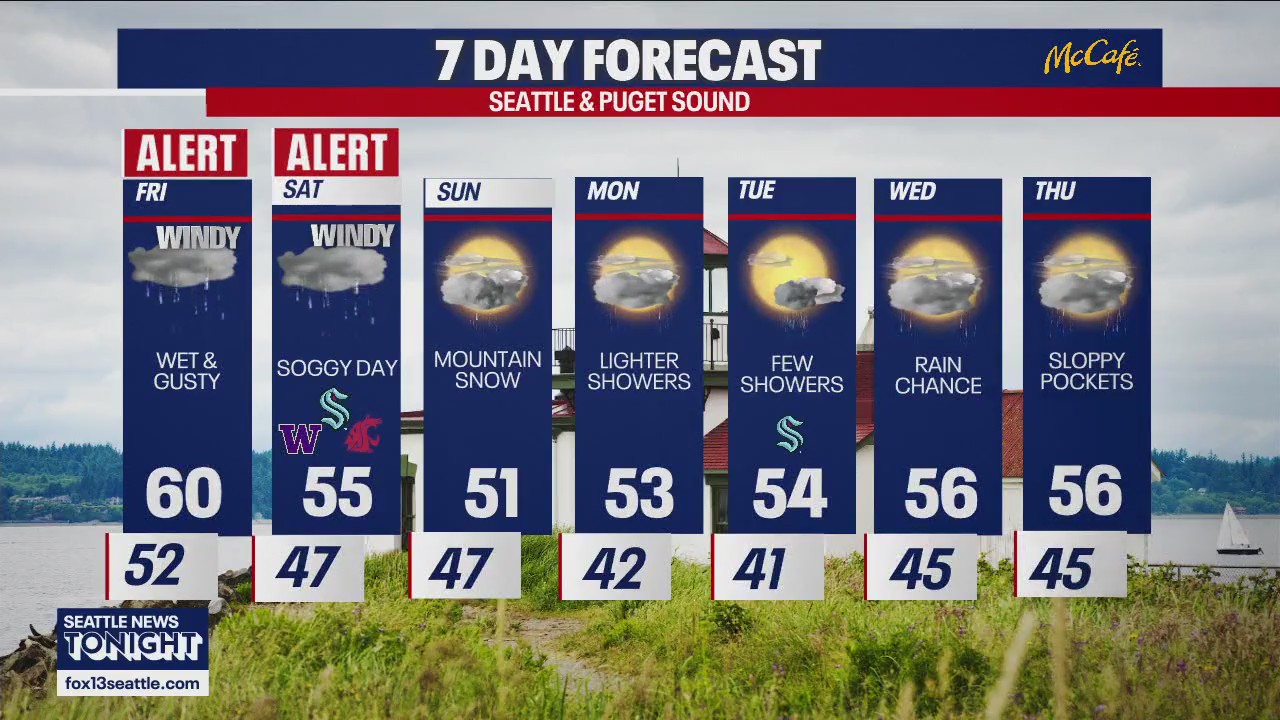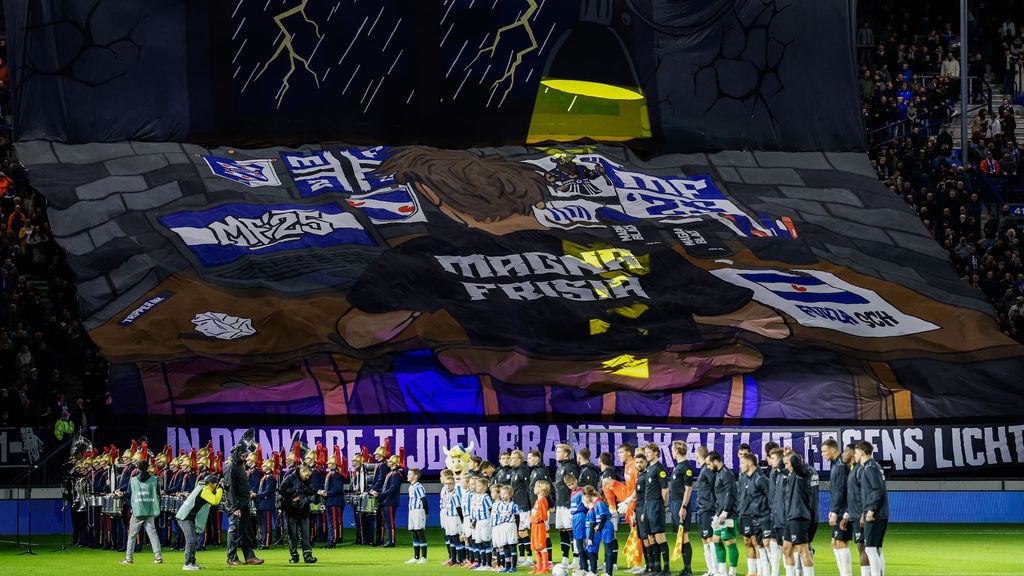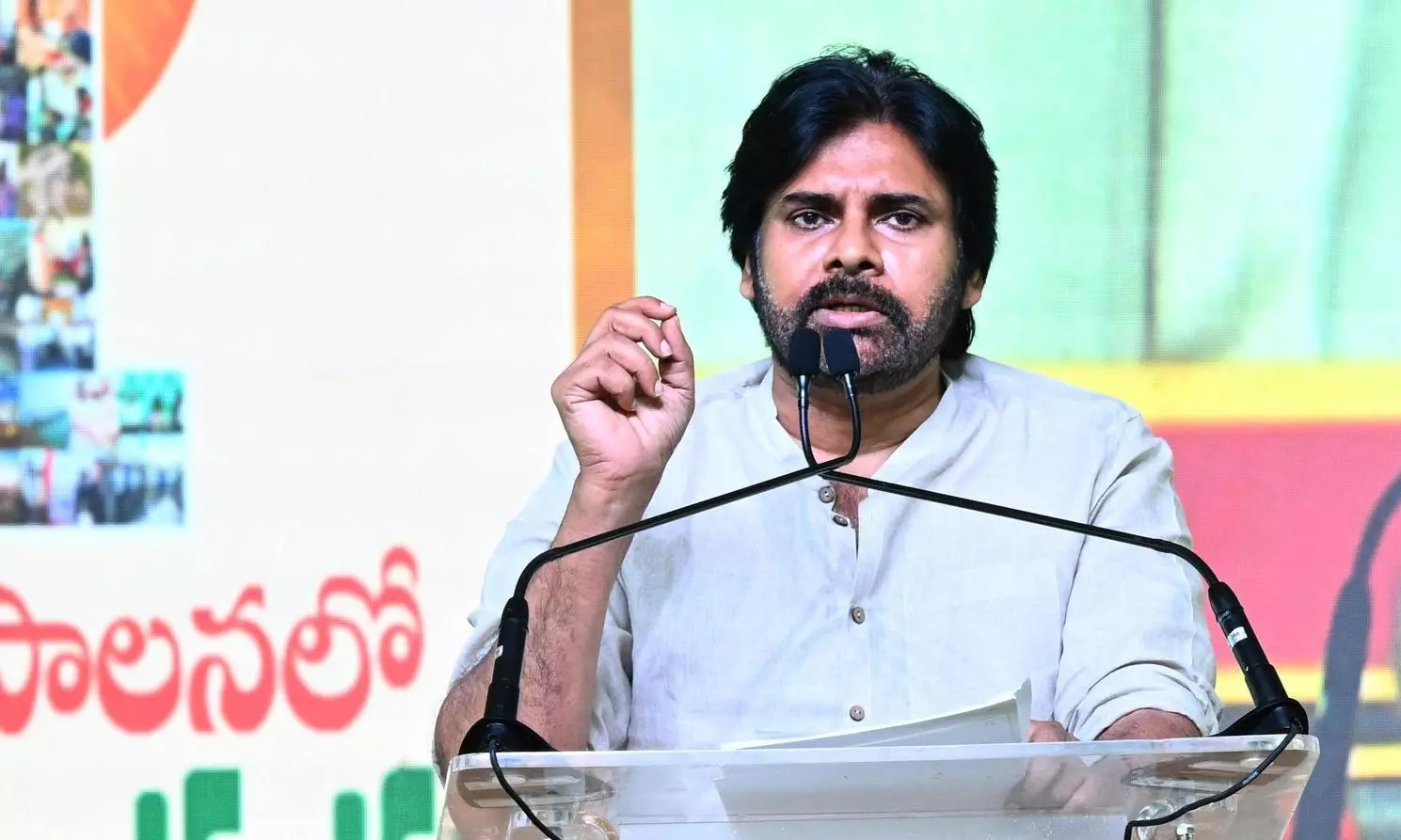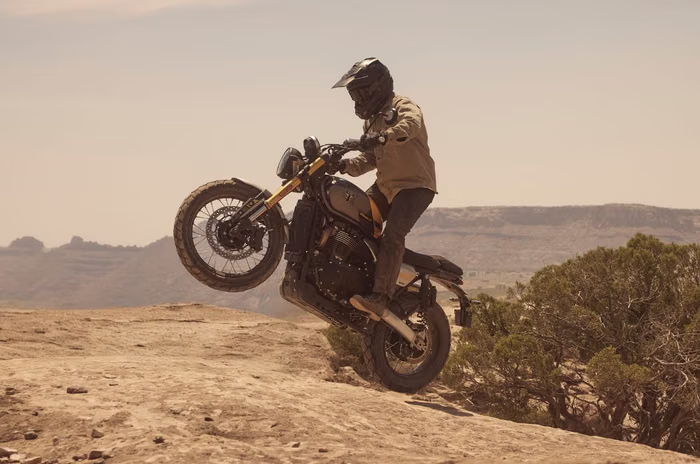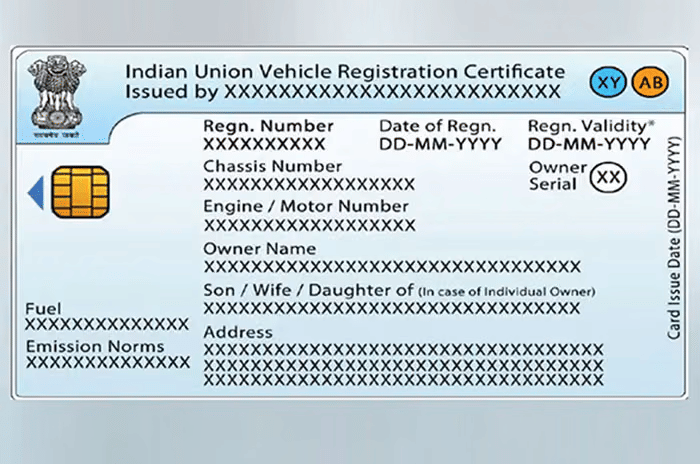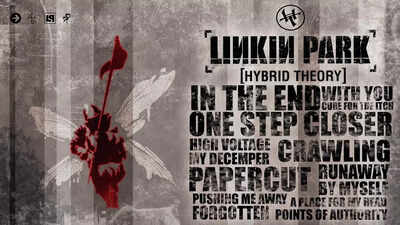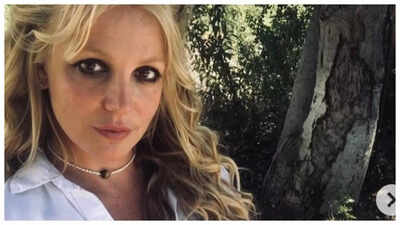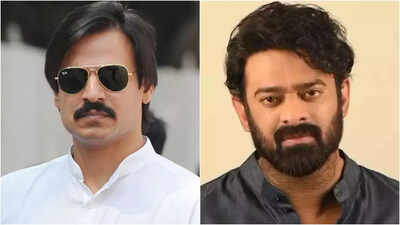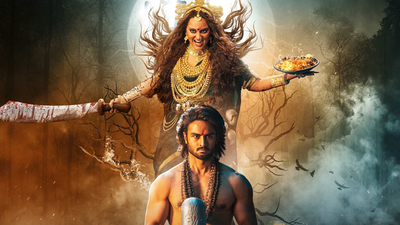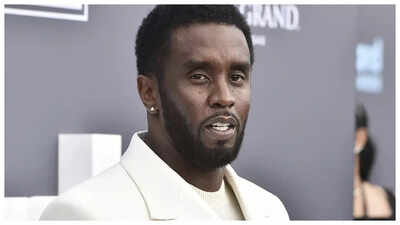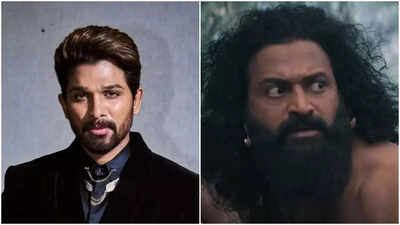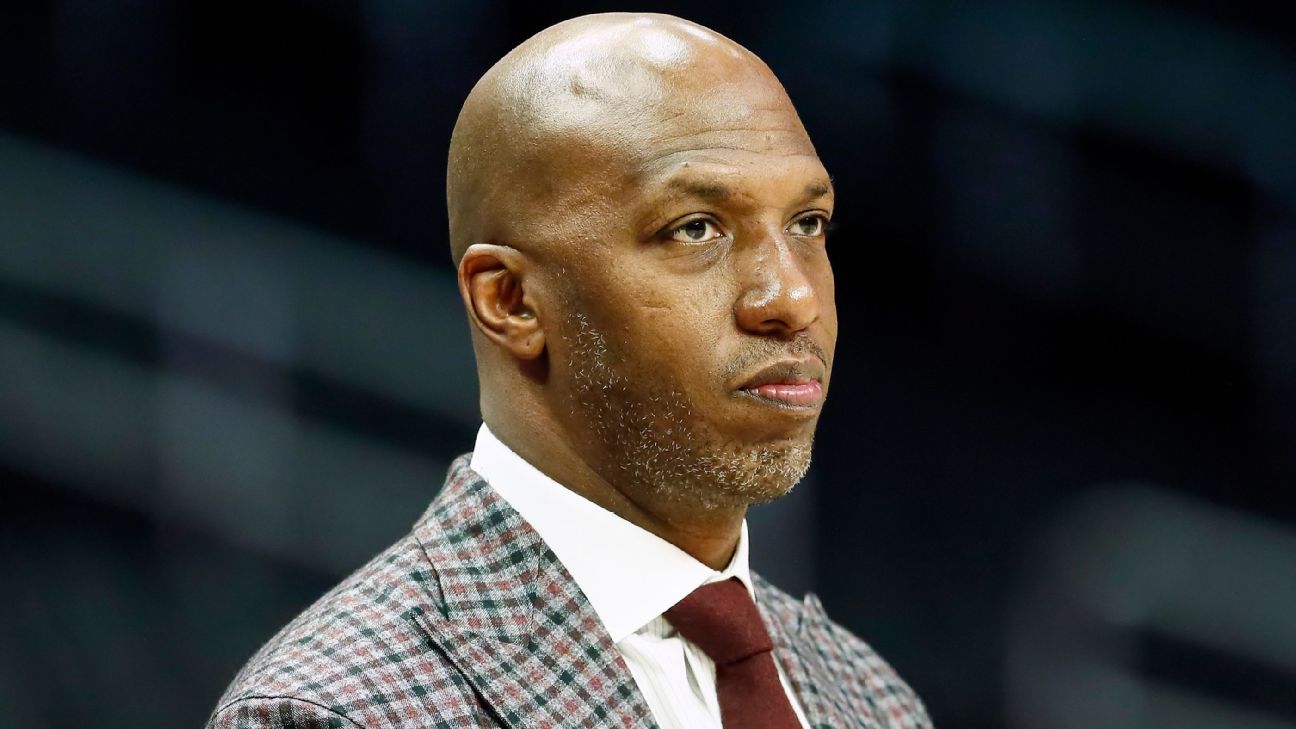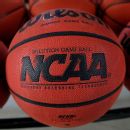With the World Series beginning Friday in Toronto, the MLB offseason is right around the corner. That means it’s time to start thinking about another winter of transactional activity across the league, with industry chatter already ramping up regarding the top available free agents and where they might land.
Teams have within five days of the conclusion of the World Series to make qualifying offers to pending free agents. This year, the QO is worth one year and $22.025 million. These offers enable teams to recoup draft pick compensation should a free agent sign elsewhere and are traditionally offered to only a handful of players. Players who receive qualifying offers have until 4 p.m. ET Nov. 18 to respond; historically, the vast majority of such players reject these one-year offers. At that point, free agency begins in earnest, and that’s when the fun really starts.
Advertisement
Here’s an early look at the 2025-26 free-agent class, headlined by slugger Kyle Tucker and full of fascinating cases of star players at a variety of positions.
Note: This list does not include any players whose team or player options are overwhelmingly assumed to be exercised, thus preventing them from becoming free agents. Ages listed are for the 2026 season (age on June 30, 2026). You can find a full list of pending free agents here.
The best player
1. Kyle Tucker, OF, 29 years old
Tucker is the consensus No. 1 player in this free-agent class and should command a contract north of $350 million. That’s a product of his age — he doesn’t turn 29 until January — and long track record of offensive impact. Since 2020, Tucker’s first full MLB season, he is one of just six hitters to post an OPS above .800 every year. The others are all well-paid superstars: Freddie Freeman, Bryce Harper, Aaron Judge, José Ramírez and Juan Soto. Based solely on the bat, Tucker undoubtedly belongs in that group. Hitters like this don’t hit the open market often, and when they do, they make a killing.
Advertisement
That said, the low-talking Floridian is reaching free agency after an oddly paced walk year with the Cubs. Tucker was dealt from Houston, where he’d spent his entire career, to Chicago in a blockbuster deal last offseason. He got off to a scorching start with the Cubs, was named an All-Star starter and looked like a legit MVP candidate. As late as June 28, he sported a .933 OPS.
Then things got weird. Tucker’s power production cratered in July and August, as he managed just four homers across 211 plate appearances. It turned out he was playing through a hairline fracture in his hand for most of the summer. Just as he appeared to be shifting back into gear, he suffered a calf strain that kept him sidelined until the final week of the regular season.
It marked the second straight year Tucker was significantly limited by injuries, a development that raises a yellow flag or two for a player expected to command a gargantuan contract. Tucker also tends to employ a more laid-back pregame routine that prioritizes preserving energy. That less-is-more approach has helped him ascend to All-Star status, but it raises a few concerns around the league about how he might age and how he’ll adapt if his body starts to need more maintenance. Signs of that physical decline have popped up in Tucker’s sprint speed and defensive metrics, areas in which his skills have dwindled precipitously over the past few seasons.
Then again, that’s probably much too nitpicky. Some very rich team is going to give Tucker gobs of money to rake in the middle of its lineup. His sauceless personality, injury concerns and defensive limitations will combine to make his sweepstakes less of a frenzy than Soto’s were last winter. But don’t get it twisted: This dude is a big prize.
Advertisement
Great hitters with flaws
2. Alex Bregman, 3B, 32
A free agent last winter, Bregman ended up in Boston on a three-year, $40 million deal with opt-outs after each season. And now, after a productive season at Fenway, he’s expected to reenter the market. A quad issue robbed him of two months over the summer and intensified concerns about Bregman’s gradually deteriorating lower half, but the offensive profile remains incredibly strong. From a swing-decision standpoint, he’s about as good as anybody in the sport. And while the contact quality has dropped off since his MVP contender days, it’s more than good enough to make this version of Bregman an All-Star-level player.
Advertisement
So where does he end up? The Red Sox will certainly be gunning for a reunion; Bregman was heralded for his influence on Boston’s bevy of young players. Perhaps the Tigers, silver medalists for his services last winter, reengage after a disappointing October exit. One could see the Phillies moving on from Alec Bohm via trade and making a play for Bregman. Most contenders have somebody entrenched at the hot corner, but nobody saw the Red Sox moving Devers to DH and snagging Bregman. That’s a good reminder that everything is on the board for a player such as this.
3. Kyle Schwarber, DH, 33
What a season it was for one of the best true power bats of his generation: 56 home runs, 132 RBI and a .928 OPS. Sure, Schwarber is a flawed player — he’s limited to DH, strikes out a ton, doesn’t offer much on the bases and turns 33 in March — but it’s not worth overthinking this. The guy went deep 56 times. People don’t do that too often. For what it’s worth, Schwarber is also regarded as one of the few game-changing locker room presences in the sport.
Advertisement
That Schwarber and the Phillies, an extension-eager club, never came to an agreement is revealing. Still, the Phils are front-runners to retain Schwarber’s services and remain incredibly interested in a reunion. One other team to keep an eye on: the Cubs. If Tucker leaves the North Side, Chicago rekindling with the beloved DH and 2016 World Series champ would surely help to placate its fan base.
4. Bo Bichette, SS, 28
A knee sprain has kept Bichette on the shelf since early September, though he told reporters he plans to be available for the World Series. Late-season injury woes aside, 2025 was an extremely successful campaign for the sweet-swinging shortstop. Bichette rebounded from a disastrous 2024 to post numbers more in line with his career norms, swatting 18 homers to go with a .311 batting average that ranked second in baseball.
Advertisement
Let’s get the elephant out of the way: Bichette is a bad shortstop. This year, he ranked as the game’s worst every-day glove at the infield’s most important spot. A prudent team would probably move him to second or third, but Bichette probably wants to stick at short. His defensive inadequacies don’t overwhelm the value of his bat — this dude rakes — but it adds a wart to the profile.
Still, Bichette’s track record of performance and his age will make him worth it for whichever team lands him. Optimistically, he should have at least a half-decade of prime left; that’s something worth paying for.
5. Pete Alonso, 1B, 31
Last winter, the Polar Bear and the only club he’d ever known engaged in a protracted stare-down that included a public besmirching from Mets owner Steve Cohen. In the end, Alonso’s market never materialized, and he returned to Queens on a lucrative, two-year deal with an opt-out that everyone expected him to exercise.
Advertisement
Unsurprisingly, that’s what happened after Alonso posted an OPS nearly 100 points higher than his 2024 total. The underlying numbers also rebounded, particularly his average exit velocities and his optimal launch angle percentages. Was that enough to reorient his value as a free agent and earn him the longer-term pact he was looking for a year ago? We’ll see. Alonso remains a horrid defender at first and a real liability on the bases. Still, he’s generally underrated, the type of needle-moving bat that would make every roster better. But when the dust settles, he’s probably back with the Mets on a deal that neither he nor the team is ecstatic about.
6. Munetaka Murakami, 1B/3B, 26
An unbridled force-of-nature at the plate since he became an every-day player in NPB at age 19, Murakami is preparing to make the jump to MLB after seven seasons of legendary slugging in Japan. In 2022, Murakami made history by smashing 56 home runs in 141 games, an NPB record that stands as the most in a single season by a Japanese-born player. Having set an unthinkable standard of Barry Bonds-esque dominance in that 2022 season, with a mind-blowing 225 wRC+, Murakami’s merely outstanding encores in 2023 (31 HR, 150 wRC+) and 2024 (33 HR, 155 wRC+) were viewed as minor disappointments, despite still ranking as some of the best offensive seasons in the league.
The spotlight grew brighter in 2025, as a potential move to MLB came into focus, but an oblique injury cost Murakami multiple months, shrinking the opportunities to scout him. Yet even in an abbreviated sample, Murakami put on a show, nearly returning to his 2022 power peak with a ridiculous .663 SLG% and a whopping 22 home runs in 56 games.
Advertisement
So what’s the catch? Why isn’t this left-handed slugger with prodigious power ranked closer to Tucker on this list? It’s simple: Murakami strikes out a lot. His 29% K rate over the past three seasons is exceptionally high relative to his NPB peers, and while that number might stand out in MLB right now, it’s difficult for teams to be optimistic that Murakami is going to make more contact against superior arms stateside. If anything, the concern is that the opposite could occur, with the whiffs piling up to the point that Murakami’s power production is undermined, and he becomes a flawed slugger with volatile ups and downs, a la Joey Gallo.
It’s also entirely realistic to suggest that Murakami is young and talented enough to make the necessary adjustments to chart a path that leads to him becoming a classic power-and-patience superstar in the mold of Matt Olson or Max Muncy, with the high volume of walks and homers compensating for the sky-high strikeout totals. That Murakami is not considered especially likely to stick at third base adds even more pressure on his bat to live up to the hype. On the whole, while his issues making contact will spook some teams, his youth and nearly unrivaled NPB résumé are still expected to culminate in a significant bidding war for his services.
7. Cody Bellinger, OF, 30
No matter how you slice it, glassy-eyed Cody was the second-best position player on the 2025 Yankees behind Aaron Judge. After the Cubs essentially contract-dumped him for nothing last winter, Bellinger responded with the best all-around season of his career since his 2019 MVP campaign. His offensive profile has changed quite a bit since then, but this version of Bellinger — allergic to strikeouts, hitting the ball in the air to the pull side just enough — is a really valuable player.
Advertisement
Add his superb defense in an outfield corner and his relative youth, and you’ve got a legitimate second or third option on a World Series team. Bellinger enjoyed his year in pinstripes, and the Yankees loved what he brought to the table. A reunion there makes a lot of sense, but it would put more pressure on Bellinger’s ability to play center field, where he’s more average than great at this point.
The Big Three arms
8. Framber Valdez, SP, 32
You could make a strong argument that Valdez belongs in a category all his own, above this other group of arms. The dreadlocked lefty finished top-10 in Cy Young voting in 2022, ‘23 and ‘24. He’s also incredibly durable, as one of just two pitchers to toss at least 175 innings in each of the past four seasons (Logan Webb is the other). Then there’s the October experience: Valdez has 16 career postseason outings. The point is Valdez has been one of the more valuable starting pitchers of this decade. And while his numbers took a half-step back in 2025, he still boasted an elite groundball rate and kept hitters from squaring up the ball.
Advertisement
Valdez’s bizarre interaction with catcher Cesar Salazar in early September, in which Valdez appeared to purposefully cross-up Salazar with a fastball, amplified some previously held concerns about Valdez’s conduct as a teammate. That incident won’t tank his free agency, far from it, but it’s a data point worth noting.
9. Ranger Suarez, SP, 30
Ranger’s sinker — his most used offering — averages a frosty 90.1 mph, firmly in the bottom 10% league-wide in velocity. Yet Suárez gets outs. A lot of ‘em. After missing the start of the year due to a back issue, the Venezuelan southpaw posted the best numbers of his career, finishing with a 3.20 ERA and just below a strikeout per inning. His postseason track record is notably robust, with a 1.48 ERA across 42 2/3 career innings. Do you feel excited about him starting Game 1 of a playoff series? Probably not. But Game 2 or 3? Definitely. There are some concerns about how he’ll age, particularly if the fastball velocity dips under 90 mph, as there simply aren’t many guys throwing this soft who get outs. But Suárez has been doing this schtick for a few years now, and at some point, the results have to mean something.
Advertisement
10. Dylan Cease, SP, 30
For teams less interested in southpaw groundball specialists such as Valdez or Suárez fronting their rotations, Cease represents an appealing alternative at the top of the starting pitching market. While his run-prevention skills have fluctuated more in recent seasons than the two lefties in this tier, Cease has been one of the game’s premier strikeout artists for his entire career, thanks to a tremendous fastball-slider combo. His bouts of ineffectiveness are the product of too many walks and far more hard contact surrendered than you’d expect for someone with Cease’s swing-and-miss stuff, but Cease has been worth at least 3.0 fWAR for five consecutive seasons.
That consistency is rooted in nearly unrivaled durability: Cease leads all MLB pitchers in starts over the past five years and has never been on the injured list due to an arm injury. Pitcher health is fickle, of course, so there’s no guarantee Cease will remain uninjured for the duration of his next contract; it’s also possible some teams will view the mileage on his arm as problematic. But that longstanding reliability could work in his favor as suitors weigh the risk of committing heavily to a pitcher in free agency, and Cease’s demonstrated peaks — including top-four Cy Young finishes in 2022 and ‘24 — should attract serious interest.

This free-agent class is headlined by power hitters who would amplify any team’s lineup. (Henry Russell/Yahoo Sports)
(Henry Russell/Yahoo Sports)
The closer
11. Edwin Díaz, RP, 31
The Mets’ embarrassing collapse does not fall on Díaz’s shoulders, as the lanky Puerto Rican was brilliant once again this year. Now that Emmanuel Clase has effectively been banished for his gambling-related malfeasance, there’s a strong argument that Díaz is the undisputed best reliever in the game. After a catastrophic leg injury during the World Baseball Classic robbed him of his entire 2023 season, Díaz is, amazingly, all the way back to his rip-roaring best.
Advertisement
That’s why, despite having two years and $37 million left on his deal, we expect Díaz to opt out and become a free agent. A reunion with the Mets remains the likeliest outcome, but there’s no reason for Eddie-D not to try to squeeze out every last dollar that he has earned over the past few years. There’s definitely a chance he and the Mets rework his current deal and he avoids the open market altogether, but either way, expect Díaz to get paid like the elite closer he is.
Tier 2 starters
12. Zac Gallen, SP, 30
It has been a troubling and confounding decline for Gallen since his third-place NL Cy Young finish in 2023. His first-half struggles in the final year of his Snakes contract were bad enough that no team was willing to meet the price to trade for him in July, despite the right-hander’s widely reported availability, and considering his 5.60 ERA at the deadline, it was tough to blame them.
Advertisement
Funnily enough, once the trade rumors were behind him and Gallen knew he was going to remain a D-back for the rest of the season, he started to pitch much better, posting a 3.32 ERA in 65 innings over his final 11 outings and restoring some optimism that he could warrant a sizable payday in free agency. It’s not like Gallen’s stuff and velocity are markedly different than during his peak, but regression with his command has caused all five of his pitches to perform worse, a trend that will need to be corrected if he is to reestablish himself as a quality starter whom teams are excited to have on the mound in important games.
13. Shane Bieber, SP, 32
Let’s start by reviewing the past half-decade of Bieber’s career. In 2020, he was the unanimous AL Cy Young during the shortened season. In 2021 and ‘22, he was a tick worse than his Cy Young year but still one of the 15 or so best starters in the world. Things tailed off in 2023, as he battled a string of injuries. He entered 2024 seemingly healthy with a rejuvenated fastball, but his elbow blew out two starts into the season, and he missed the rest of it while recovering from Tommy John surgery.
Advertisement
That rehab process extended into this season, and he was dealt to the Jays at the deadline having not made a big-league start in 2025. Toronto’s roll of the dice paid off, as Bieber rewarded the Blue Jays with seven solid outings down the stretch. He has since made three October starts for the Jays, two of which were truncated and forgettable and one a magnificent, six-inning gem in ALCS Game 3 that helped turn the tide of that series.
So what is Bieber now? There’s reason to think another offseason of recovery and intentional training can recover some of the magic the elbow surgery stole. He has performed admirably this postseason considering the circumstances, flashing the elite pinpoint command that once made him a no-doubt ace. We’re buying the athleticism, the makeup and Bieber’s ability to adapt as he ages. It will be interesting to see whether he goes for a short-term high-AAV deal with an opt-out or a more traditional multiyear contract.
NPB stars, part 2
14. Kazuma Okamoto, 3B, 30
A franchise staple for one of the most prominent organizations in NPB, the Tokyo-based Yomiuri Giants, Okamoto’s prospects of coming to MLB had long been clouded by Yomiuri’s longstanding reluctance to post its players. But Yomiuri will honor Okamoto’s desire to make the jump to the big leagues now, enabling the team to receive some financial compensation for his departure, rather than likely watching him leave for nothing after the 2026 season, when he’d reach the requisite nine years of NPB service to become an unrestricted international free agent.
Advertisement
Okamoto has been one of the best hitters in Japan for a while — he homered against Team USA in the 2023 World Baseball Classic championship — but he leveled up in a meaningful way in 2025. Although he missed two-plus months in the middle of the season due to a left elbow injury, Okamoto was tremendously productive at the plate when healthy.
He hit .327/.416/.598 with 15 HR in 293 plate appearances across 69 games, good for an astonishing 214 wRC+ that ranked first among NPB hitters with at least 200 plate appearances — yes, even ahead of Murakami (208 wRC+). Okamoto’s 11.3% strikeout rate and 90% in-zone contact rate were both career-best marks, and he is exceptionally adept at pulling the ball in the air, enabling his power to manifest regularly in games.
He’s also a better bet to stick at third base long-term than Murakami, and he has experience at first base and in left field, offering several paths for him to fit on a big-league roster. While he’s four years older, right-handed and doesn’t possess quite the eye-popping raw power of Murakami, it’s entirely reasonable to suggest that Okamoto is more likely to succeed in MLB right away and possibly in the long term as well.
15. Tatsuya Imai, SP, 28
Expected to join Murakami and Okamoto in this winter’s class of Japanese stars making the jump to MLB is Imai, who will reportedly be posted by the Seibu Lions following a monster season in which he led all NPB starters in WHIP (0.89) and strikeout rate (27.8%) while posting a 1.92 ERA in 163 ⅔ innings. Relative to nearly every other NPB pitcher who has come to MLB in recent years, Imai’s pitch mix is notably more shallow — for now, anyway. His 95-mph four-seam fastball (48%) and 86-mph slider (33%) accounted for more than three-quarters of his pitches thrown in 2025, with the changeup (9%), splitter (5%) and sinker (4%) usage lagging behind.
Advertisement
That’s not to say there aren’t successful MLB starters deploying a heavy dose of heaters and sliders — Cease, Hunter Greene, and Spencer Strider say hello — but it remains to be seen if Imai’s stuff is good enough at present for him to follow suit or if his arsenal will need adjusting once he arrives stateside. Age is on Imai’s side — he doesn’t turn 28 until May — and should help him secure a longer deal than most starting pitchers in this year’s free-agent class, but there are enough questions that the financial outlay is expected to be closer to what Kodai Senga got than Yoshinobu Yamamoto. Also of note: While Murakami is represented by Casey Close of Excel Sports Management (the same agency that represents Kyle Tucker and Kyle Schwarber), Imai and Okamoto are Scott Boras clients.
Rock-solid position players
16. Josh Naylor, 1B, 29
Traded by Cleveland last winter after his first All-Star appearance, Naylor raked for the D-backs before being dealt to Seattle at the deadline and becoming a key contributor during the Mariners’ postseason run. Don’t be fooled by his burly build and high-effort hacks into thinking that Naylor is a one-dimensional slugger; there’s a lot more finesse to his game than meets the eye.
Advertisement
That was most evident in his shocking success stealing bases in 2025, despite his third percentile sprint speed, but it’s also relevant in the batter’s box, where Naylor’s excellent contact ability keeps his strikeout totals low while enabling his power to play to all fields and against various pitch types. He has also turned himself into a rock-solid defender at first base. History tells us that first basemen are rarely the most popular free agents, but Naylor’s relative youth and positive recent trajectory could land him a deal in excess of what Christian Walker secured a year ago (three years, $60 million).
17. Trent Grisham, OF, 29
Arguably no player climbed these rankings more dramatically over the course of the season than Grisham, who exploded into relevance as a key member of the Yankees’ position-player group after being a virtual afterthought in his first season in the Bronx. To wit: Despite being on the roster for the entire season and every round of the postseason during New York’s run to the World Series in 2024, Grisham appeared in just 76 regular-season games and zero in October.
Advertisement
This year, Grisham’s 581 plate appearances marked a career high and ranked fourth on the team. Center fielders with Grisham’s power (34 HR) and patience (14.1% walk rate) are rare, and that he’s still just 29 aids his case as an alluring free agent. It’s possible some teams will view him in a fairly skeptical light, considering his timely career year follows a much longer major-league track record of mediocrity, but there are real skills to be excited about here, and Grisham’s market should reflect that.
18. Gleyber Torres, 2B, 29
Torres hit free agency last winter as one of the youngest position players available but ultimately settled for a one-year deal with Detroit, with hopes of bolstering his value with a stronger 2025 showing than in his last hurrah as a Yankee. He generally succeeded, exhibiting elite plate discipline while improving both his hard-hit and barrel rates. He was especially terrific early on for the Tigers (.284/.386/.437 in 72 games through the end of June) but notably faded as the season went on, a decline perhaps explained by a hernia Torres revealed he was playing through after Detroit’s season ended in October.
Advertisement
He is expected to undergo surgery to address the issue, but that rehab is not projected to impact his availability to start 2026. Although his defense continues to rate as comfortably below-average, Torres should be an obvious target for clubs in search of an offensive boost at the keystone.
19. Jorge Polanco, 2B, 32
Polanco entered free agency a year ago on a decidedly dour note, having just endured the worst campaign of his career in his first year as a Mariner before undergoing knee surgery at the outset of the offseason. Even still, Polanco’s longstanding track record of production before his injury-marred 2024 earned him a spot toward the end of our free-agent rankings, with the idea that a bounce-back could be in store if he could get healthy.
Advertisement
After surprisingly staying in Seattle on a one-year deal, Polanco did exactly that, turning in an excellent regular season at the plate (26 HR, 132 wRC+) and delivering several of Seattle’s biggest swings during its run to Game 7 of the ALCS. That strong showing should be enough to garner a multiyear deal for Polanco in his second trip to the open market, but as a poor defender with a troubling injury history, the ceiling for his next contract might be limited.
Starting pitchers with questions
20. Michael King, SP, 31
A breakout 2024 had King primed for a massive platform year in 2025, and his first 10 starts of the season (2.59 ERA in 55 ⅔ innings) suggested he was firmly on track to pitch his way into the top tier of free-agent starters. Then a shoulder injury put King on the shelf for all of June and July, and a left knee injury derailed him shortly after he returned to the mound in August. King was healthy enough to make four September starts and a one-inning relief appearance in the wild-card series, but with just one fully healthy season as a major-league starting pitcher on his résumé (2024), his durability remains a considerable red flag as he enters the open market for the first time. His upside is significant, though, and a shorter-term pact with a lofty AAV could certainly be in the cards for King.
21. Lucas Giolito, SP, 31
Giolito was one of baseball’s most durable starting pitchers until elbow surgery wiped out the entirety of his first year with the Red Sox in 2024. He bounced back with a 3.41 ERA in 145 innings in 2025 but finished the year on a sour note when he reported elbow discomfort that made him unavailable for Boston’s wild-card series against the Yankees. The Red Sox didn’t rule Giolito out for future postseason rounds, but their early elimination left his status uncertain at the outset of the offseason.
By reaching 140 innings in the regular season, Giolito converted his 2026 $19 million team option into a player option that he was widely expected to decline, but it’s unclear if his end-of-season injury scare could alter that decision. If he reenters free agency healthy, Giolito remains an alluring option for teams searching for stability in the rotation, though without sizable upside.
22. Brandon Woodruff, SP, 33
Before shoulder surgery put him on the shelf for a year and a half, Woodruff was one of the best starting pitchers in MLB: His 2.93 ERA in 595 innings from 2019 to 2023 was fourth-lowest among qualified starters. But returns from major shoulder injuries tend to be more tenuous than returns from elbow surgery, and the results of Woodruff’s reacclimation to the Brewers’ rotation were both extraordinary and unusual. Despite his fastball velocity averaging closer to 93 mph than the 96 he sat at pre-surgery, Woodruff was as dominant as ever, registering a career-high strikeout rate (32.3%) and career-low walk rate (5.4%) while posting a 3.20 ERA in 64 ⅔ innings. He ditched his slider in favor of a cutter, both his two-seam and four-seam fastballs continued to perform well even with diminished velocity, and his changeup remained an excellent swing-and-miss offering.
While Woodruff’s performance alone would seem to warrant a sizable payday, adding to the challenge of evaluating the right-hander as he hits free agency (Woodruff is expected to decline his side of a $20 million mutual option for 2026) is that he finished the year hurt, landing back on the injured list in mid-September due to a lat strain that rendered him unavailable for Milwaukee’s postseason run. While that cloud of uncertainty cannot be ignored, Woodruff’s proven ace potential remains enticing.
23. Jack Flaherty, SP, 30
While Flaherty’s return to Detroit went well enough that the right-hander is expected to decline his $20 million player option for 2026, it’s tough to pin down just how coveted he’ll be in his second trip through free agency. His 2025 was a tick worse than the season he posted in 2024, after which he lingered on the open market into February before reuniting with the Tigers on a short-term deal. He has proven more durable in recent years and remains a strong strikeout artist, thanks to his two plus breaking balls (slider and curve), but the rest of his profile is fairly mediocre. With him just 30 years old, there’s enough to like with Flaherty that a multiyear deal should be attainable, but it wouldn’t be surprising if another prolonged free agency is in store.
The catcher
24. J.T. Realmuto, C, 34
Thirty-one catchers compiled at least 1.0 FanGraphs WAR in 2025. Only two of them, Realmuto and Danny Jansen, are set to hit free agency. So despite Realmuto’s advanced age, he’s still far and away the best backstop available this winter. The muscled Oklahoman isn’t what he once was — the best catcher in the world — but he’s still a valuable player. He was essentially a league-average hitter this year and remained impressively durable, leading the league in games started behind the dish. A reunion with the Phillies feels like the most likely outcome here; he’s simply too valuable a cog in their pitching operation to let him walk. Realmuto will want a three-year deal, but he’ll probably end up with two.
Hitters with difficult markets to project
25. Eugenio Suárez, 3B, 34
Suárez hit 49 home runs in 2025 for the second time in his career and returned to the Mariners via midseason trade after a year-and-a-half as a D-back, enabling him to take part in Seattle’s memorable October run, which included one of the biggest swings in franchise history: his go-ahead grand slam in ALCS Game 5. For as feel-good of a story as the Suárez-to-Seattle reunion was, it’s difficult to ignore his sharp decline in production post-trade, and that sours some of the optimism for his market as he enters free agency for the first time.
Suárez’s issues making consistent contact likely aren’t going to magically improve as he enters his mid-30s, which puts immense pressure on his prodigious slugging to continue if he is to remain a viable every-day player, especially if his defense at third base continues to trend in the wrong direction. That said, Suárez’s overwhelmingly positive clubhouse reputation should earn him some additional interest from clubs looking for a quality veteran presence in addition to the high-end slugging he offers.
26. Ha-Seong Kim, SS, 30
Kim played only 48 games this year — 24 each for Tampa Bay and Atlanta — after signing a two-year free-agent deal with the Rays last winter. Tampa left him on waivers, and the Braves pounced, despite being light-years out of contention, hoping Kim wouldn’t activate his opt-out and they could scoop up an every-day shortstop for 2026 on the cheap. That doesn’t seem likely to happen, as reports have indicated the South Korean infielder plans to decline his $16 million option and reenter the market. It’s a decision that makes some sense, despite his injury-plagued season (shoulder surgery kept him out until July, and then back problems stole time as well). Kim is the only true shortstop in this class if, like us, you’re low on Bichette’s glove. That should secure him another multiyear pact, even though he projects to be a well-below-average hitter.
27. Luis Arraez, INF, 29
Arraez promises to inspire a wide array of opinions as one of baseball’s most unique players. Traditionalists might look at his multiple batting titles and microscopic strikeout rates as outstanding and appealing outliers in an era defined by swing-and-miss, but the modern game prioritizes players who are far more multidimensional than what Arraez currently offers. It’s not just that Arraez rarely produces extra-base hits; it’s that he barely reaches. His walk rates have plummeted recently, and his defense doesn’t seem to be getting any better. While there still will (and should) be an appetite for a player with one truly elite skill, it’d be misleading to suggest that Arraez’s hitting alone is worth a massive long-term contract. He’s an exceptionally fun and singular player but also a limited one. How his free agency unfolds will be one of the more intriguing storylines of the winter.
Tier 2 relievers
28. Devin Williams, RP, 31
It was a tumultuous year for Williams, who was dealt to the Bronx last winter after spending the entirety of his career in Milwaukee. Handed the closer role out of spring training, Williams and his airbender changeup had a cataclysmic April, in which he was booed multiple times by the Yankees faithful and booted from the ninth inning by skipper Aaron Boone. Things gradually got better over the summer, as Williams regained his manager’s trust and slotted back into a high-leverage role by the playoffs. In fact, Williams didn’t allow a run in 22 of his final 23 outings, postseason included.
What does that mean as he enters free agency? A multiyear deal feels like a given, but Williams probably won’t get the landmark contract he would’ve been hoping for before the 2025 season. A contender will pay him to close, and the airbender is still a special pitch, but Williams’ stock has fallen significantly since this time last season because of how rocky his April was.
29. Robert Suarez, RP, 35
The flame-throwing Venezuelan has two years and $16 million left on his current deal, a nice haul for a reliever his age, but we think Suarez will opt out and seek a higher AAV after posting yet another dominant season for the Padres. That 2.97 ERA looks great, not spectacular, but if you overlook two disaster outings in which he recorded one out and surrendered five runs, that figure drops to 1.70. There are certainly concerns about whether Suarez’s elite fastball velocity (98.5 mph) will sustain as he creeps closer to 40, especially because of how much he leans on that pitch (60% usage), but this is one of the truly elite relievers in the game, and he should get a multiyear deal that reflects as much.
Deadline bats who played well
30. Ryan O’Hearn, 1B/OF, 32
The first-time All-Star tailed off slightly after a deadline deal sent him from Baltimore to San Diego, but the overall numbers were unavoidably impressive for a guy who was left to rot on the waiver-wire scrap heap just a few years ago. O’Hearn’s peripheral numbers were strong for a third straight season and should secure him a two-year deal with a team in need of a lefty masher. For teams that pass on the upper crust of sluggers such as Alonso, Schwarber and Naylor, O’Hearn will be a perfectly competent consolation prize. He also earns rave reviews for his clubhouse presence, which will only help his case.
31. Harrison Bader, OF, 32
When Bader went from Minnesota to Philadelphia at the deadline, it wasn’t even the biggest Twins-Phillies deal of the week. But the luscious-locked center fielder energized the Phillies’ lineup, offering a much-needed contact-oriented profile. His groin injury in Game 1 of the NLDS turned out to have an enormous impact on that series, as the Phillies sorely missed his presence in the lineup. Given the likelihood that the team moves on from right fielder Nick Castellanos, Bader could make some sense as a versatile fourth outfielder. But a two-year deal might be in order for the 32-year-old, who just posted the best offensive season of his career. Bader will find a sturdy market for his services.
32. Mike Yastrzemski, OF, 35
Having not debuted in the big leagues until age 28 with the Giants, Yastrzemski finally enters free agency at age 35 coming off a sneaky stellar post-trade run with Kansas City, during which he slugged .500 with more walks (25) than strikeouts (22) across 50 games. His raw power is modest, but Yastrzemski has a knack for pulling the ball in the air and just had a career year from a plate-discipline standpoint, making more contact than ever and drawing walks at a 12.9% clip. He remains subpar against left-handers, but Yastrzemski should be quite productive if deployed properly in the right lineup and ballpark.
Tier 3 relievers
33. Luke Weaver, RP, 32
Weaver was handed the ninth inning after his teammate Williams hit the schneid in April. He was magnificent through the season’s first two months, with just two earned runs to his name on May 26. Then he hit the shelf due to a hamstring injury that derailed his year. Weaver returned in late June but wasn’t the same, posting a 5.31 ERA the rest of the way before rough outings in AL wild-card Game 1 and ALDS Game 1 pushed Weaver out of Boone’s bullpen trust circle. Just a year ago, this guy was the most trusted arm on a World Series team, so you have to think he gets a multiyear deal somewhere. Hopefully his late-season struggles were injury-based and not a more concerning harbinger.
34. Ryan Helsley, RP, 30
The hard-throwing closer had an ERA of 3.00 when he was traded from St. Louis to Queens on deadline day. Helsley had a multiyear track record of high-leverage success, built on one of the hardest heaters in the sport. But his Mets tenure will go down as one of the all-time reliever disasters, as Helsley posted an abhorrent 7.20 ERA in 22 outings in blue and orange. His late-summer implosion was crucial in the Mets’ shocking tumble down the standings. Helsley compiled the second-most fWAR among relievers between 2022 and ‘24 — 5.7, with a 1.83 ERA in 167 2/3 innings — but his 2025 was so weird, bad and ugly that it might scare teams off. In the end, though, we think he gets a two-year deal.
Deadline bats who played poorly
35. Cedric Mullins, OF, 31
Mullins spent a decade in the Orioles organization before being dealt to the Mets at the deadline. His production had been closer to league average in the years since his star-level 2021 campaign, in which he hit 30 homers, stole 30 bases and finished ninth in AL MVP voting. His particularly poor showing with New York (.565 OPS including a brutal 6-for-55 skid to finish the season) pushed Mullins much further down these rankings than we expected him to be a few months ago. But as a plus baserunner and solid defender at a premium position in center field, Mullins should still have several suitors.
36. Willi Castro, UTL, 29
An All-Star in 2024 known for his unrivaled defensive versatility, Castro was having another stellar season before he was shipped to Chicago as part of Minnesota’s epic fire sale at the trade deadline. And while he continued to provide value as a competent defender at multiple positions, Castro’s bat completely disappeared as a Cub, posting a paltry .485 OPS and not registering a single plate appearance across Chicago’s eight postseason games. His relative youth and flexibility with the glove should still make him a fairly alluring free agent.
A bunch more starting pitchers
37. Merrill Kelly, SP, 37
That the Rangers were willing to send three solid prospects to Arizona for two months of Kelly suggests that he is still well-regarded within the industry, but free agency is a different equation, especially for a pitcher this old. Without plus velocity, Kelly gets by on great command of a six-pitch repertoire, headlined by an excellent changeup. Like most of the pitchers in this tier, he’s more likely to provide value in the regular season than as a no-doubt postseason starter, but that’s not something to sneeze at.
38. Tyler Mahle, SP, 31
Mahle was absolutely brilliant through the end of May (1.64 ERA in 66 innings across 12 starts) before fading in June and landing on the injured list due to shoulder fatigue, which kept him out until mid-September. It was encouraging to see him finish the season healthy, but Mahle hasn’t thrown more than 100 innings since 2022. Nevertheless, his stellar form in the early going could net him a multiyear deal.
39. Zach Eflin, SP, 32
Recurring back injuries limited Eflin to 14 ineffective starts (5.93 ERA) for Baltimore in 2025, but he was a mid-rotation workhorse the previous two seasons (3.54 ERA in 343 innings) and could prove to be a nice buy-low option for teams seeking rotation reinforcements. We’re only two years removed from Eflin finishing sixth in AL Cy Young voting — let’s not forget about this guy.
40. Zack Littell, SP, 30
The good: Littell’s 3.73 ERA ranks 17th out of 37 qualified starters over the past two seasons, his 1.65 BB/9 is bested only by Tarik Skubal over that same timeframe, and among free-agent pitchers, only Framber Valdez and Zac Gallen threw more innings in 2025 than Littell’s 186 2/3 frames.
The bad: Whiffs are hard to come by for Littell (17.1% strikeout rate ranked 47th out of 52 qualified starters in 2025), and he’s particularly susceptible to the long ball, making his next home ballpark a crucial variable when projecting his effectiveness moving forward.
41. Griffin Canning, SP, 30
After allowing the most earned runs in the American League with the Angels in 2024, Canning was enjoying a nice bounce-back season in his first year with the Mets, leaning heavily on his slider and changeup to keep hitters off-balance. But his season ended abruptly when he ruptured his left Achilles on a non-contact play in June, starting a rehab process that could stretch into 2026. A team that believes in Canning’s revamped form with New York and his ability to rebound from serious injury could target the right-hander as a low-cost rotation option.
Hitters who confuse us
42. Max Kepler, OF, 33
Kepler struggled badly out the gate in his first year as a Phillie but settled into being a useful contributor and finished the regular season strong, hitting .262/.322/.505 with seven home runs over his final 30 games. Kepler still exhibits decent power and plate discipline, but his earning potential will depend on whether teams view him as a viable every-day player or more in a predominantly platoon role, like Philadelphia did.
43. Miguel Andujar, OF/DH, 31
Albeit in a smaller sample, Andujar quietly posted one of the better offensive seasons of any free-agent bat available. Among hitters with at least 300 plate appearances in 2025, Andujar’s .318 average ranked second in MLB behind only Aaron Judge, and he was one of the most productive trade-deadline acquisitions in the league after being dealt by the A’s to the Reds. He remains a poor defender who doesn’t draw walks, but he crushes lefties and makes a ton of contact. He’s a sneaky target for teams on a tight budget looking for offense.
44. Rob Refsnyder, OF, 35
This isn’t just any platoon bat. The degree to which Refsnyder demolishes left-handed pitching puts him in some truly outrageous company. Among hitters with at least 250 plate appearances against southpaws over the past two seasons, Refsnyder’s .949 OPS ranks fifth behind Aaron Judge, Ketel Marte, José Ramírez and Vladimir Guerrero Jr. That’s ridiculous. He’s essentially unplayable against right-handers and a below-average corner-outfield defender, but his special skill should make Refsnyder broadly appealing on the open market.
Tier 4 relievers
45. Brad Keller, RP, 30
An unremarkable starting pitcher for the first six years of his career, Keller broke out in a big way in the Cubs’ bullpen in 2025, throwing harder than ever and posting a sterling 2.07 ERA in 69 2/3 innings with underlying data that strongly supports his performance as legitimate. Keller will likely cost considerably less than the other top relievers who already have a boatload of saves on their résumés, but he could offer similar or even greater upside if he can sustain the gains he made in Chicago.
46. Raisel Iglesias, RP, 36
Iglesias had a catastrophic start to his season, allowing seven home runs across his first 25 appearances after allowing four total in 66 games pitched in 2024. That left him with an unsightly 6.75 ERA in early June, but after that, Iglesias got back on track and was generally the elite game-ender we’ve long known him to be, posting a 1.25 ERA over his final 43 1/3 innings, a dominant stretch that went somewhat unnoticed amid a lost Braves season. Even at age 36, Iglesias might command a multiyear deal based on his second-half bounce back and lengthy track record.
Iglesias and Keller are our picks to squeeze into the end of our Top 50 among a deep free-agent class of accomplished righty relievers that also includes Kenley Jansen, Kyle Finnegan, Emilio Pagán, Phil Maton, and Tyler Rogers (among others).
Veteran starters
47. Chris Bassitt, SP, 37
Bassitt was remarkably durable for a pitcher his age, making 32 starts and shouldering 170 ⅓ innings with a perfectly capable 4.01 ERA. He also provided a crucial, lockdown eighth inning in relief in ALCS Game 7 against the Mariners. The under-the-hood numbers are more skittish on Bassitt, who relies on a kitchen-sink approach at this point in his career. A nagging back injury has limited him during Toronto’s October run, but at this point, this probably isn’t an arm you’d be amped about putting out there in a postseason game anyway. It’s also worth a mention that the Blue Jays’ clubhouse absolutely adores this guy. There aren’t many pitchers who can throw this many innings and not be completely awful, and that will get Bassitt a rotation spot somewhere next season.
48. Jose Quintana, SP, 37
Quintana has delivered a better-than-league-average park-adjusted ERA in 12 of his 14 major-league seasons, including 2025, when he helped stabilize an injury-ravaged Brewers rotation. The stuff unsurprisingly isn’t getting any better — he just posted a career-low 16% strikeout rate — but he still seems to have the guile to get outs in a bulk role and thus deserves a nod toward the end of this list.
49. Justin Verlander, SP, 43
It took until mid-July for Verlander to record his first win as a Giant, but he managed to find his groove down the stretch, posting a 2.60 ERA in 72 ⅔ innings over his final 13 starts. Even at age 42 (his birthday is in February), Verlander is still innovating, adding an 80-mph sweeper to complement his traditional slider and curveball, a pitch that performed as his most effective by run value. While his goal of reaching 300 wins feels farfetched at this point (he’s at 266), he pitched well enough in 2025 to earn the chance to continue that chase.
A probably washed guy who used to rake
50. Marcell Ozuna, DH, 35
For the first two months of the season (.883 OPS), Ozuna resembled the impactful slugger he was the previous two years in Atlanta. But in early June, the burly Dominican revealed that he’d been battling a tear in his right hip. He never ended up on the injured list, but his performance plummeted as the season went on, with a .673 OPS after June 1. While Ozuna’s overall offensive résumé should garner some interest, there are ample reasons for teams to find production elsewhere: He’s a full-time DH in his mid-30s with lingering injuries issues, and he has a history of multiple off-field incidents.



